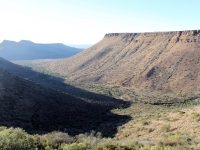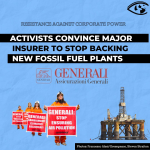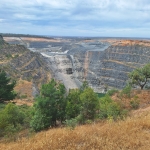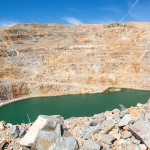Fracking South Africa

The Karoo is not as well known as Kruger National Park with its elephants, leopards and lions. Located in the Western Cape region of South Africa, it is a desert area that is home to tortoises and eagles, and has been the subject of recent experiments to resettle the black rhino and resurrect the quagga, an unusual zebra like creature that went extinct in 1998. But today the people, flora and fauna of the Karoo are threatened by companies like Shell, the Anglo-Dutch oil company, which wants to drill for natural gas.
Like many ancient lands, the Karoo has fossil fuels trapped underground. Royal Dutch Shell, Falcon Oil & Gas and Bundu Oil & Gas want to explore 90,000 square kilometres for the natural gas using a controversial new technology called "fracking"
Bonang Mohale, the chairman of Shell South Africa, recently described the business potential as "bigger than the discovery of gold in Gauteng"
However, a coalition of concerned citizens - Treasure the Karoo Action Group (TKAG) - has sprung up to oppose the plan. Their mission to their fellow citizens is simple: "South Africa cannot afford to gamble with your water supply, food security, the health of your family, and the heritage of your children in pursuit of a short-term gain for foreign oil companies and our government."
TKAG is supported by Greenpeace, who attempt to explain what this technology does: "To access these reserves, fluid is pumped down a drilled channel (well) into the gas-bearing rock at very high pressures. This causes the rock to fracture, creating fissures and cracks through which the gas can 'escape'. The fracturing liquid generally consists of mainly water, mixed with sand and chemicals. Numerous different chemical agents are used, many of which are flagged as dangerous to humans and the environment (carcinogens, acute toxins).
"The fracturing of a single well requires a huge volume of water: around 9,000 - 29,000 m3 (9 -29 million litres). Chemicals make up about 2% of the fracturing liquid, i.e. about 180,000 - 580,000 litres. Only 15 - 80% of the injected fluid is recovered, meaning that the rest remains underground, where it is a source of contamination to water aquifers."
Chris Hartnady, a well known geologist, says that fracking could have a huge impact on the Karoo desert especially because it will deplete the dwindling water supply. "Shale gas production would become a serious competitor for water, requiring as much as four times the current annual usage of the groundwater in all three of the Shell exploration areas," he said at the Shale Gas Southern Africa conference in Cape Town earlier this week.
Hartnady noted that surface water might also become contaminated with fracking fluids and waste water. Indeed, communities in the U.S. have seen tap water catch on fire in fracking areas. (Watch this YouTube video and this one from Time magazine) Fracking can also dramatically increase the likelihood of earthquakes, according to recent research in Youngstown, Ohio, where residents were hit last Christmas Eve and again on New Year's Eve.
To learn more about the dangers of fracking, check out the film Gasland and the Drilling Down series in the New York Times.
- 183 Environment



